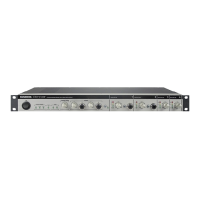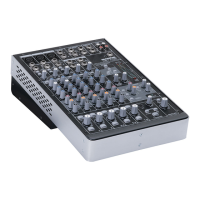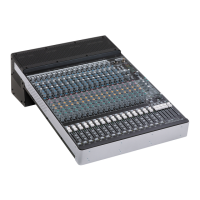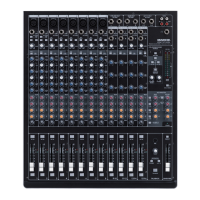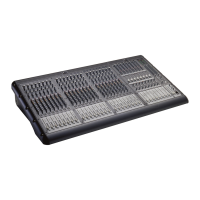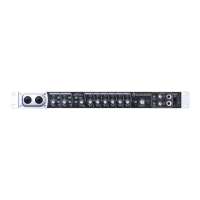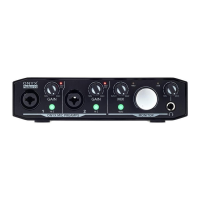Onyx Premium Analog Mixer with Multi-Track USB
Onyx Premium Analog Mixer with Multi-Track USB
12
0. Mon Send Jacks
Stage monitors allow the talented musicians
in the band to hear themselves clearly on stage.
This can be a good thing! The monitor mix may be
carefully adjusted in level using the aux mon controls.
These tap a portion of each channel's signal to provide
a /4" TRS output here to feed external stage monitors.
These could either be passive stage monitors powered
by an external amplifier, or powered stage monitors
with their own built-in amplifier.
The monitor signal is the sum (mix) of all
the channels whose aux mon control is set to more
than minimum. If they want “more me and less Brian,”
you may turn up their channel's aux mon control,
and turn down Brian’s.
The overall output level may be adjusted with
the aux master mon fader. Additionally, you could
add an external graphic EQ between this output
and your powered monitors. This will allow you
to adjust the EQ, and minimize the chance of feedback
from nearby microphones.
The monitor output is not aected by the main
mix fader or the channel faders. This allows you
to set up the monitor mix and level just right, and not
have it change when a channel fader or the main mix
fader is adjusted. This is known as “pre-fader.”
There is one mon send jack on the Onyx8 and
two mon send jacks on the Onyx2, Onyx6
and Onyx24.
MON SEND
2 1
BAL/
UNBAL
BAL/
UNBAL
BAL/
UNBAL
FX FSW
10 11 12
. FX Send Jack
This /4" TRS line-level output may be used to feed
an external eects processor (FX), such as a nice
sound eect or delay unit. The output from this jack
is an exact copy of what goes into the internal FX
processor, being the careful mix of all channels whose
aux FX control is turned to more than minimum.
(The processed output of the internal FX does
not come out of this output, but is added internally
to the main mix or monitor mix.)
The overall output level may be adjusted with the aux
master FX fader. (This fader also aects the level going
into the internal FX.)
The output is “post-fader,” so any changes
to the channel faders will also aect the level
going to the external processor.
The processed output from the eects processor
is usually returned to a spare channel, and you may
carefully mix the original unprocessed channel (dry)
and the processed channel (wet). Altering the original
channel fader increases both the wet and dry
signals and keeps them at the same delicate ratio.
For example, the reverb remains at the same level
relative to the original.
2. FX Footswitch
This /4" TRS connector is where to connect your
favorite footswitch. This allows you to easily mute
or un-mute the internal eects at will.
There are two types of footswitches to choose from:
latching and momentary:
• Latching – Latching means the switch is either
in the on or o position when engaged.
• Momentary – Momentary means the switch
is engaged when pressed [and held] down.
Any one-button on/o footswitch will work, although
a latching switch is recommended.
If the internal FX have already been muted
with the internal FX mute switch, then the footswitch
has no eect.
The FX footswitch jack on the Onyx8
is located on the top panel just above
the headphones jack.
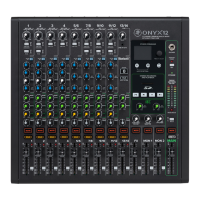
